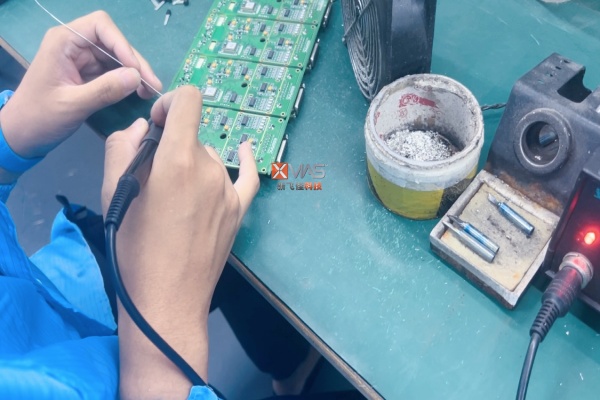Component placement is only one part of the PCBA assembly process; in fact, numerous circuit board assemblies also involve a great deal of manual soldering of the wiring harness, which is usually relegated to the DIP (direct insertion) plug-in segment. Unlike other steps in SMT (surface mount technology) automation, DIP requires workers to precisely insert components into the board's through-holes and subsequently apply solder to hold them in place using wave soldering techniques. Wire harnesses are essentially multiple wires encapsulated in an outer jacket made of thermoplastic or thermoset plastic, which provides basic protection but limited protection against extreme environments or temperature variations, so there are some limitations in wire harness applications. In contrast, cable assemblies, which also contain multiple strands of wire wrapped in a more robust outer material, are designed to withstand the challenges of harsh environments and show a significant difference from wire harnesses.
In addition to exploring the main differences between cable assemblies and wiring harnesses, it is also necessary to focus on the problems encountered in the actual application of both and their solutions:
First, the common challenges of cable assemblies and coping strategies:
1. Improper selection: Cable assembly performance failures often stem from the selection of materials do not match the operating environment. For example, if the cable is not strong enough to withstand the expected stress, which may lead to breakage. Solutions include rigorous pull testing to verify resistance.
2. Installation Errors: Improper installation processes, whether it's PCB soldering negligence or mold setting deviations, can lead to performance degradation. Ensuring that strict procedures and quality control are followed is critical.
3. Lack of testing: Inadequate testing of components after assembly can lead to hidden problems. A thorough and systematic testing process is the key to preventing high repair costs in the future.
II.. Wiring harness common problems and solutions:
1. Improper handling of wire: wire handling, including selection, cutting and other procedures, any failure may affect the final product. Standardize the operating procedures, strengthen the process monitoring is fundamental.
2. Layout is not reasonable: the wires layout confusion not only affects the overall assembly of the wiring harness, but also may lead to subsequent failure in use. Scientific and reasonable layout planning is necessary.
3. Labeling errors: In mass production, labeling errors can lead to confusion in identification. The implementation of strict labeling management and review procedures to ensure accuracy.
4. Soldering defects: poor crimping or soldering defects will directly affect the performance of the circuit, the use of high-precision soldering technology and strengthen the quality inspection is a key measure.
5. Missing components: Missing parts during assembly will directly lead to harness failure. Carefully check the assembly drawings and strengthen the verification mechanism of the assembly process.
6. Improperly tied wires: It is important to tie the wires with the right strength, too tight or too loose may cause problems. Develop standard operating practices and train workers to master the correct binding skills.
These problems are not only the pain points of wire harness processing, but also an important factor affecting the quality of PCBA patch welding, therefore, comprehensively improve the level of technology and quality control is particularly critical.


